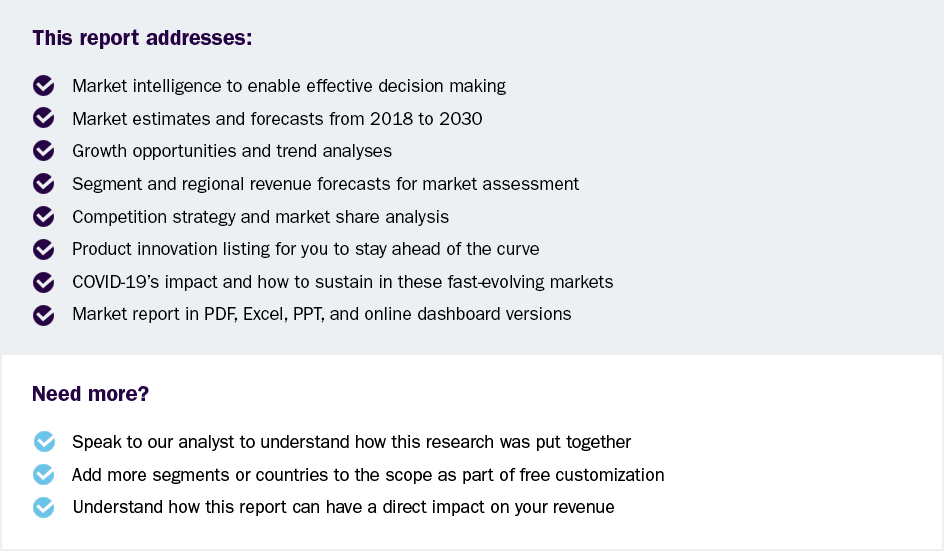Bipolar Disorder Market Size To Reach $5.87 Billion By 2030
Bipolar Disorder Market Growth & Trends
The global bipolar disorder market is anticipated to reach USD 5.87 billion by 2030, growing at a CAGR of 2.7% from 2024 to 2030, according to a new report by Grand View Research, Inc. Government support for generating awareness about the bipolar disorder and technological advancements that facilitate accurate detection of a patient’s mood and mental state are a few of the factors driving the growth of this market.
The rising prevalence of bipolar disorders is likely to propel market growth in the forecast period. Government initiatives also drive the market growth. For instance, International Bipolar Foundation’s Social Security Disability Insurance (SSDI) or Supplemental Security Income (SSI) are programs offered by the Social Security Administration (U.S.) for the benefit of the people affected by bipolar disorder.
Besides, technological advancements in smartphones, smartwatches, and wearable devices improve diagnosis rates by capturing physiological, behavioral, and environmental data effectively to detect the patient’s mood and mental state. Online self-management tools also result in timely intervention, thereby improving diagnosis rates and treatment rates for the disorder. However, the patent expiry of blockbuster drugs in this market is likely to impact market dynamics in the forecast period. Additionally, the drugs in the bipolar disorder market are bound to face intense competition from generic drugs, as treatment options for bipolar disorder. Other factors likely to restrain market growth in the forecast period include side effects associated with bipolar drugs, and misdiagnosis of bipolar disorder.
 Request a free sample copy or view report summary: Bipolar Disorder Market Report
Request a free sample copy or view report summary: Bipolar Disorder Market Report
Bipolar Disorder Market Report Highlights
-
The mood stabilizer segment dominated the market in 2023, with a share of 35.0% in 2023 due to the rising prevalence of bipolar disorder.
-
The selective serotonin reuptake inhibitor segment dominated the market in 2023, with a share of 25.0%. The factors responsible for the market growth are the efficacy and safety profile of selective serotonin reuptake inhibitors (SSRIs), which are effective in managing the depressive symptoms occurring due to bipolar disorder.
-
The hospital pharmacies segment dominated the market in 2023, with a share of 49.8% in 2023. This market growth was attributed to the increase in the number of patients seeking a diagnosis of their mental health.
-
North America dominated the bipolar disorder market with a market share of 39.4% in 2023. This was attributed to the increase in the cases of bipolar disorders and the presence of significant medical institutes in the region.
Bipolar Disorder Market Segmentation
Grand View Research has segmented the global bipolar disorder market on the basis of type, drug class, distribution channel, and region:
Bipolar Disorder Type Outlook (Revenue, USD Million, 2018 - 2030)
-
Mood stabilizer
-
Anticonvulsants
-
Antipsychotic drugs
-
Antidepressant drugs
-
Antianxiety drugs
-
Other Types
Bipolar Disorder Drug Class Outlook (Revenue, USD Million, 2018 - 2030)
-
Selective serotonin reuptake inhibitor
-
Serotonin norepinephrine reuptake inhibitor
-
Tricyclic antidepressant drugs
-
Monoamine oxidase inhibitors
-
Benzodiazepines
-
Beta blockers
-
Other Drug Classes
Bipolar Disorder Distribution Channel Outlook (Revenue, USD Million, 2018 - 2030)
-
Hospital Pharmacies
-
Retail Pharmacies
-
Online Pharmacies
Bipolar Disorder Regional Outlook (Revenue, USD Million, 2018 - 2030)
-
North America
-
U.S.
-
Canada
-
Mexico
-
-
Europe
-
UK
-
Germany
-
France
-
Italy
-
Spain
-
Denmark
-
Sweden
-
Norway
-
-
Asia Pacific
-
Japan
-
China
-
India
-
Australia
-
South Korea
-
Thailand
-
-
Latin America
-
Brazil
-
Argentina
-
-
Middle East and Africa (MEA)
-
South Africa
-
Saudi Arabia
-
UAE
-
Kuwait
-
List of Key Players of Bipolar Disorder Market
-
AstraZeneca
-
Eli Lilly and Company
-
GSK plc
-
Johnson & Johnson Services, Inc
-
Pfizer Inc.
-
AbbVie Inc.
-
Otsuka Holdings Co., Ltd.
-
Bristol-Myers Squibb Company
-
Teva Pharmaceutical Industries Ltd.
-
Sumitomo Pharma America, Inc.

